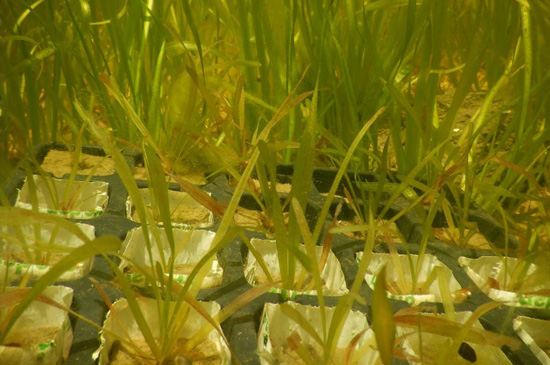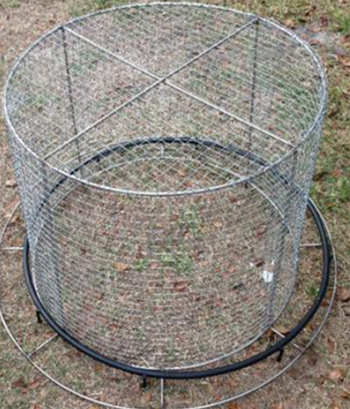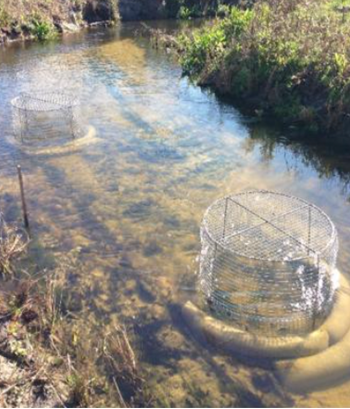A Proven Formula: Remove + Replant + Maintain = Restore
Step 1: Lyngbya Removal
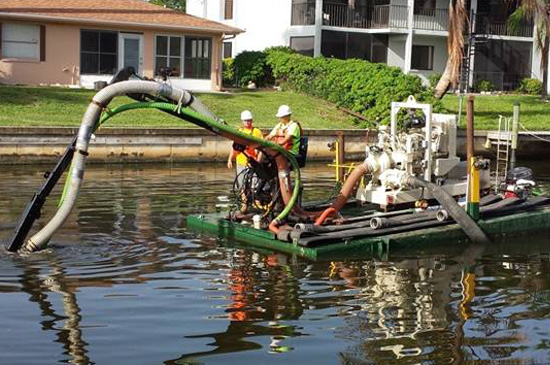
The Lyngbya and other muck is vacuumed from the hard rock canal bottoms. This leaves a clean surface for the eelgrass plants to be planted.
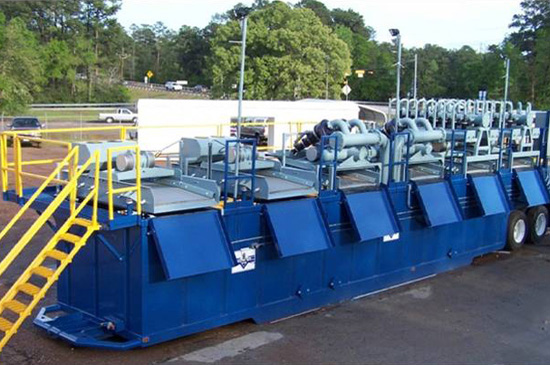
Mechanical separator removes sediments, rocks, and trash before the water is mixed with polymers and the water sent to the final bagged filtration system.
The first step is removing the Lyngbya through specially designed vacuum equipment that doesn’t disturb the existing sand and sediment. The suctioned material is pumped through vacuum tubes into a mechanical separator located on shore.
The separator does what its name implies — separates the Lyngbya and other organic material from the water. The water is further filtered through a bag system then is returned to the canal. This approach removes 50%+ nitrogen and 95% phosphorus from the water. The clean water is returned to the ecosystem.
This systematic filtration approach is important because it removes a nutrient source for the Lyngbya. Thus increasing the competitive advantage for the newly planted eelgrass plants. The organic material is transported to an offsite farm where it will be used for fertilizer and soil enrichment.
Step 2: Eelgrass Planting
Once the Lyngbya has been removed, aquaculture specialists plant a special eelgrass called “Rock Star”. This eelgrass variety has been planted in the Pilot Phase, Phase 1.A, and the first part of the Phase 1.B. Another variety of eelgrass called “Salty Dog” will be planted in future phases. The Salty Dog eelgrass is more resistant to salinity spikes.
The eelgrass is first grown in aquaculture facilities until the root structures are developed. Then, the eelgrass is planted directly by hand and covered with a manatee exclusion cage or the eelgrass will be planted with a wheel type mechanism. Planting the eelgrass by hand requires the peat pot to be large enough. Planting the eelgrass with the wheel type mechanism from a boat requires the eelgrass to be planted in small peat pods.
Step 3: Plant Protection
The last step is perhaps the most important: surrounding the eelgrass plantings with a simple “manatee exclusion cages” that prevent hungry herbivores (not only manatees but also fish, ducks, and turtles) from eating the plants before they have a chance to establish a stable root system. Each plant can develop a root system that extends up to 7-1/2 feet from the main plant, enabling the plants to grow across the bottom of the canals.
The aquaculture team will monitor the cages, make adjustments if they are needed and when the eelgrass is thriving, remove the cages.


